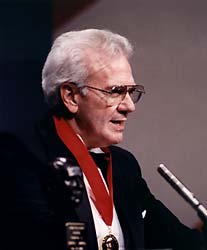In 1970, the Carnegie Foundation created the “comprehensive” classification to describe small to mid-sized colleges and universities that offer baccalaureate degrees in the liberal arts and professional fields, master’s and first professional degrees, but not doctorates.
Twenty years later, in his landmark essay, “The Ugly Duckling of Higher Education,” Frank Wong, then provost of the University of Redlands, explored the identity and distinctive characteristics of these comprehensive colleges and universities. His provocative thinking caused a group of chief academic officers from private colleges and universities to create a study group to explore the distinctive characteristics of their institutions.

In 1994, Ernest L. Boyer, then president of the Carnegie Foundation for the Advancement of Teaching, spoke before a large crowd at the annual meeting of the American Association of Colleges and Universities. He called for a “New American College” that would renew the tradition of higher education as service to society. Later that year, a conference on the New American College held at Wingspread gave rise to the Associated New American Colleges, which were officially founded in 1995 (and renamed the New American Colleges and Universities, or NACU, in 2009). Read an account of the conference from Hal Wilde, then president of founding member North Central College.
Since that time, NACU has served as the only nationwide consortium of private, comprehensive colleges and universities dedicated to the purposeful integration of liberal education, professional studies, and civic engagement.
* Copyright note:
The text of this page is available for modification and reuse under the terms of the Creative Commons Attribution-Sharealike 3.0 Unported License and the GNU Free Documentation License (unversioned, with no invariant sections, front-cover texts, or back-cover texts).